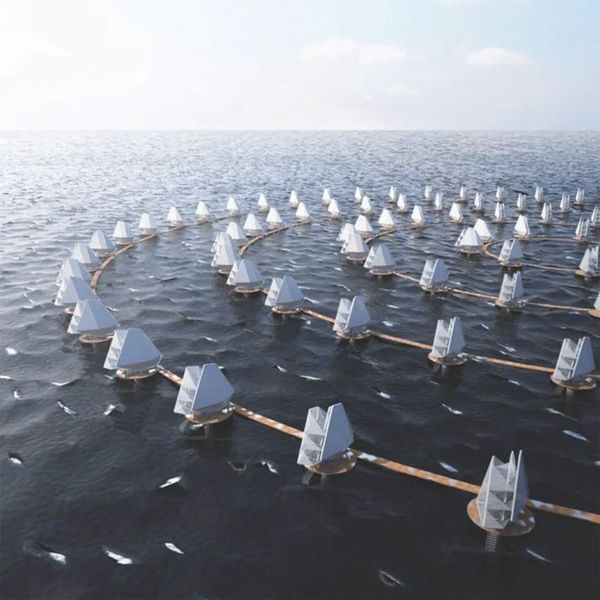The story of one of the most popular (now retro) household items made of plastic in the 1970s: the object serving the purpose of storing and pouring bagged milk and that of its designers.
Written by Piroska Novák
I met Gyula Ernyey back in February, at the restaurant frequently referred to as “Stoczek canteen” qualifying as the most popular spot of students and teachers of the university of technology. This time, the doctoral advisor and his doctoral candidate did not consult about research methods or new sources, but about the objects, designs and photos professor Ernyey brought with him. After lunch, the plastic milk pourers in various colors surfaced, and our table soon turned into an impromptu exhibition space. What could the relationship between the professor and these design objects be?
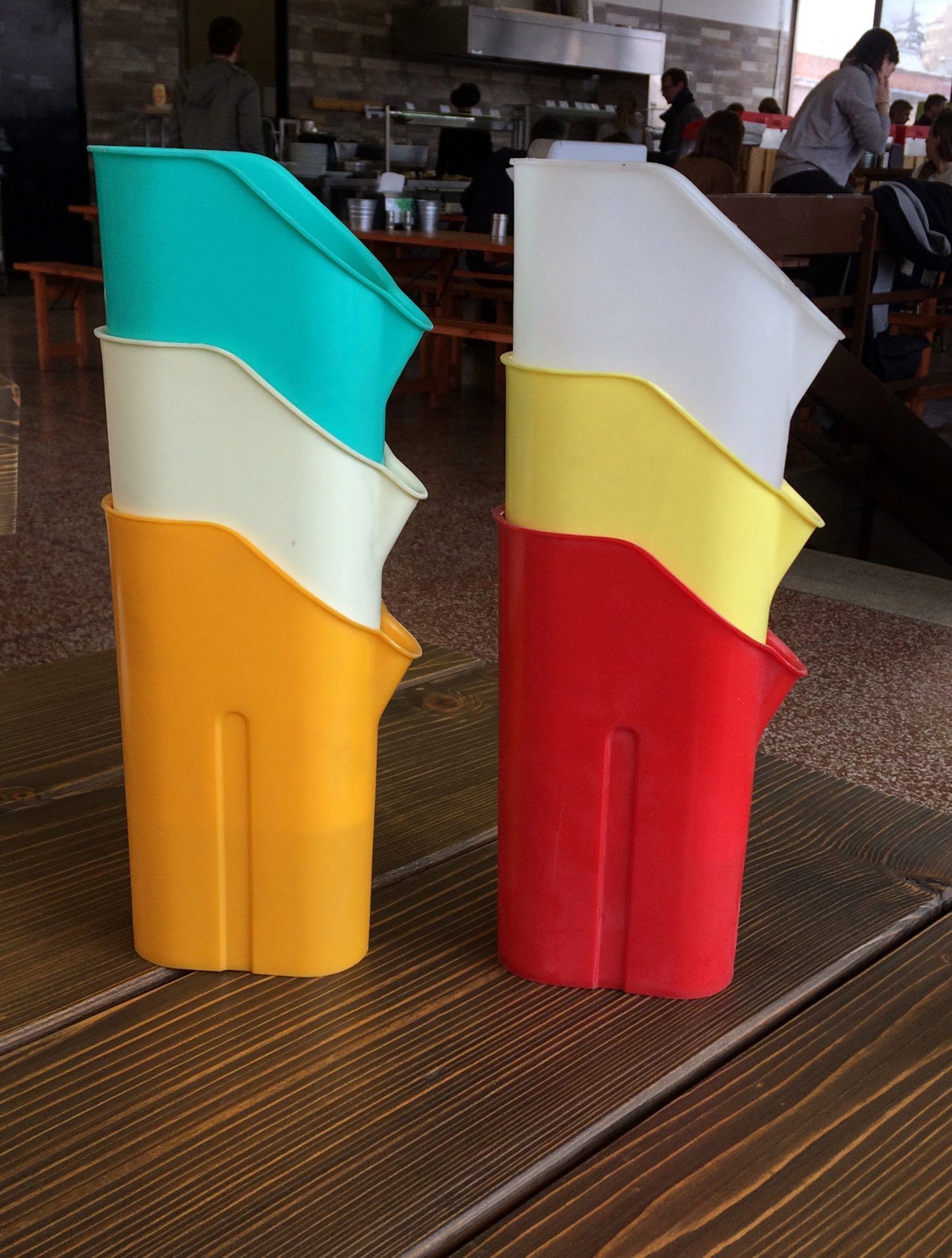
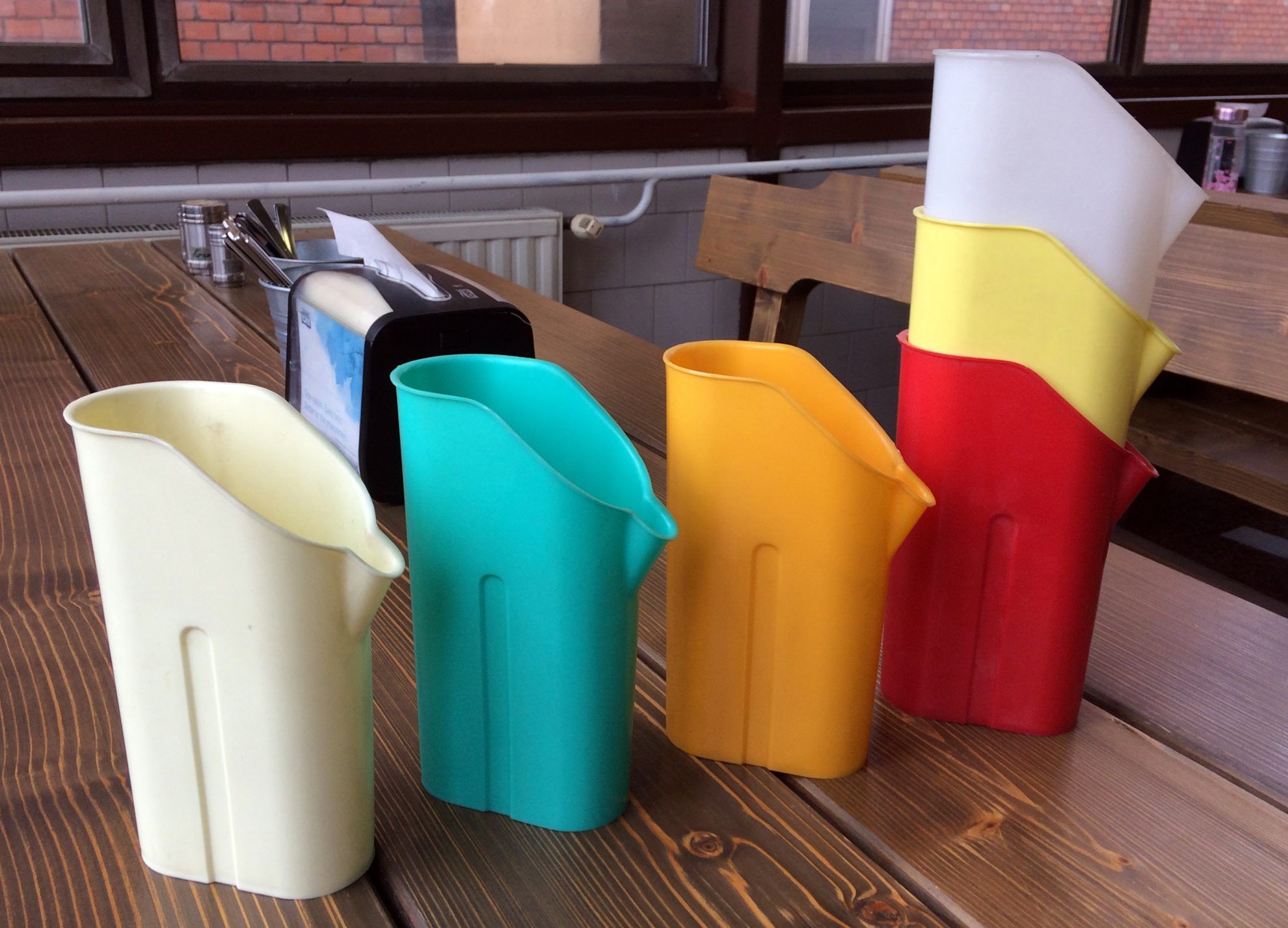
Gyula Ernyey is primarily known for being the most appreciated researcher, theorist and writer of Hungarian and Central-Eastern European design history. His educational work commencing in 1967 at the Hungarian College of Applied Arts is also well-known, and perhaps even the fact that he worked as the deputy general director of the Museum of Applied Arts between 1975 and 1988. His designing activity represents a much more hidden side of his diverse and enviably productive career, resulting in objects such as the emblematic plastic milk pourer of the seventies and eighties, which formed an integral part of almost every household in Hungary at the time. Before taking a closer look at this object made of polypropylene, let’s get to know the career of its designer briefly.
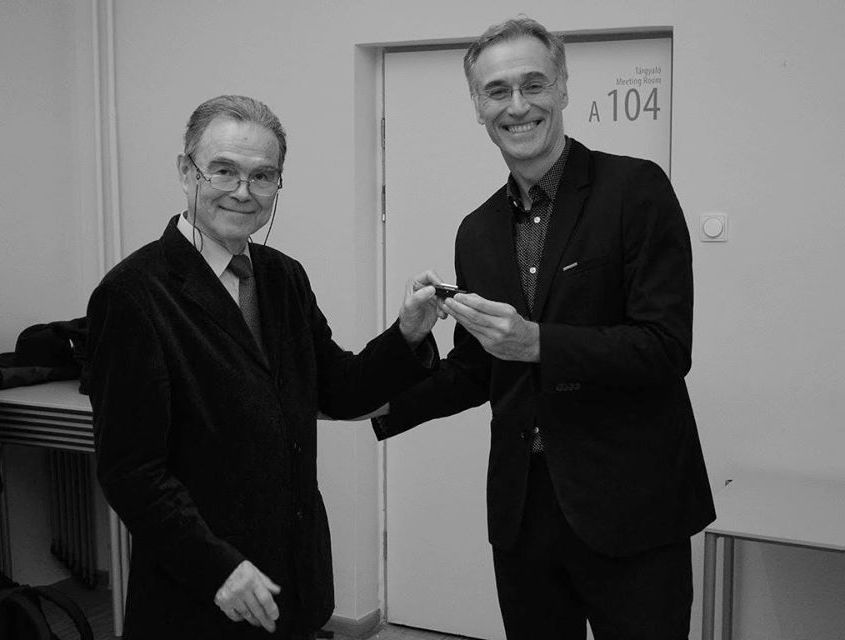
Gyula Ernyey was born in 1941, in Hódmezővásárhely, but he considers Miskolc more as his hometown. He started his studies at the Department of Interior Design of the Hungarian College of Applied Arts in 1960. From the third year of his studies, the legendary professor of architecture, György Szrogh was elected to lead the Department of Architecture. His approach had a positive influence on the studies of young Ernyey, who achieved the appreciation of his professors with his design for renovating a rural house in a modern approach in that year. In addition to György Szrogh, the progressive and exemplary principles of Frigyes Pogány, the rector of the college provided the most dominant guidance for Gyula Ernyey. His diploma project completed in 1965, – the upholstered sitting bench and wooden-glass constructed table designed for the community spaces of the “floating” museum building standing on columns above the ruins of Aquincum – made its way to the 5th National Applied Arts Exhibition held in Kunsthalle, Budapest. The color photo made of the furniture set was published in the exhibition review of the publication Tükör in 1966, with the subtitle „ The Dream Room of Youth (The interior design department of the Hungarian College of Applied Arts)”.[1] Ernyey’s first publication in literature is also related to this exhibition, as he also published a piece in relation to the same.[2]


In the fall of 1967, Gyula Ernyey returned to the college as an assistant professor. A representative of Miskolci Műanyagfeldolgozó Vállalat (Miskolc Plastic Processing Corporation) contacted the institution in 1968 via telephone (!) [3] to recommend a qualified designer for them. They chose Gyula Ernyey, who had been preparing designs of household items (such as adhesive paper dampener, napkin holder, soap holder) and home furnishing elements (including a combined shelf-mirror for bathroom use, modular bathroom furniture) for almost twenty years. According to the qualified interior designer with a literary ability, he “had to learn plastic” as the education of artificial, synthetic materials was at quite early stage even at the design training course launched in 1950. Ernyey asked for the help of his student, József Gollob (who was seven years older than him, for the record), who started his studies as an industrial designer in 1965 after obtaining a diploma as a mechanical engineering technician.[4] Gollob regularly created technical drawings and models for Ernyey’s designs, this is why both of their names are indicated under the products. We should add that listing these would not take long, as only a few of their designs made it to the prototype or pilot production phase, and even less of them were actually made into a product.
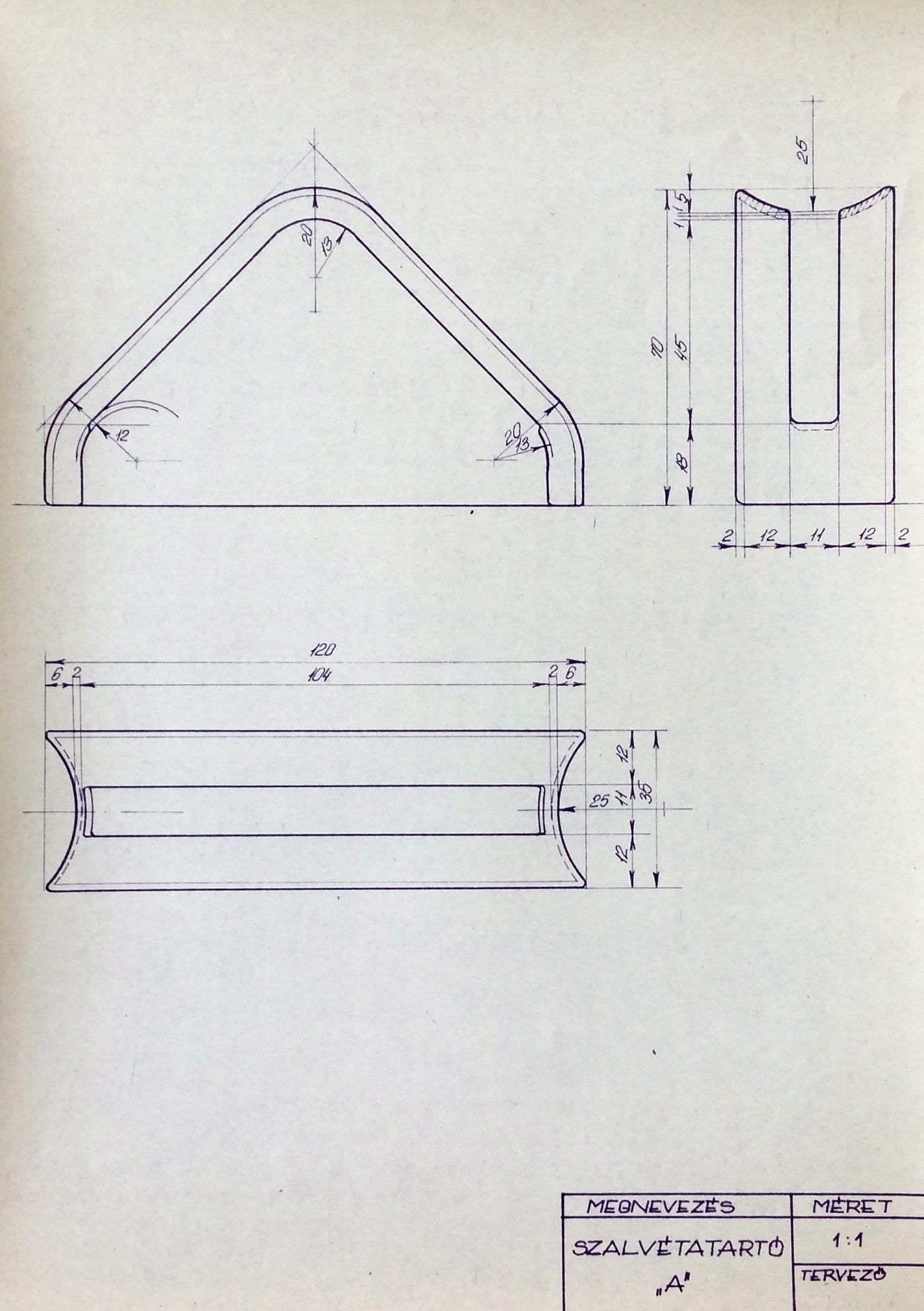
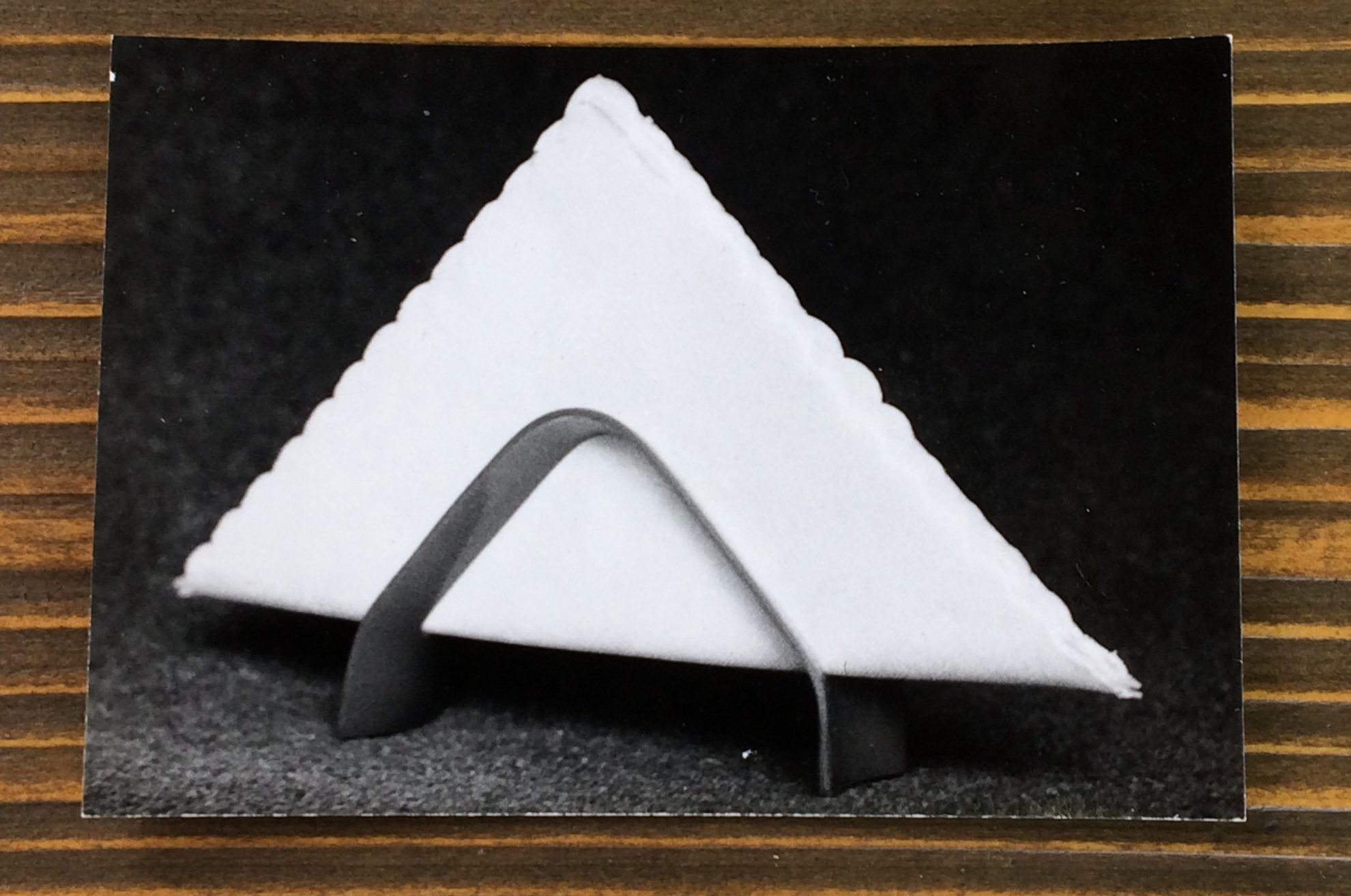

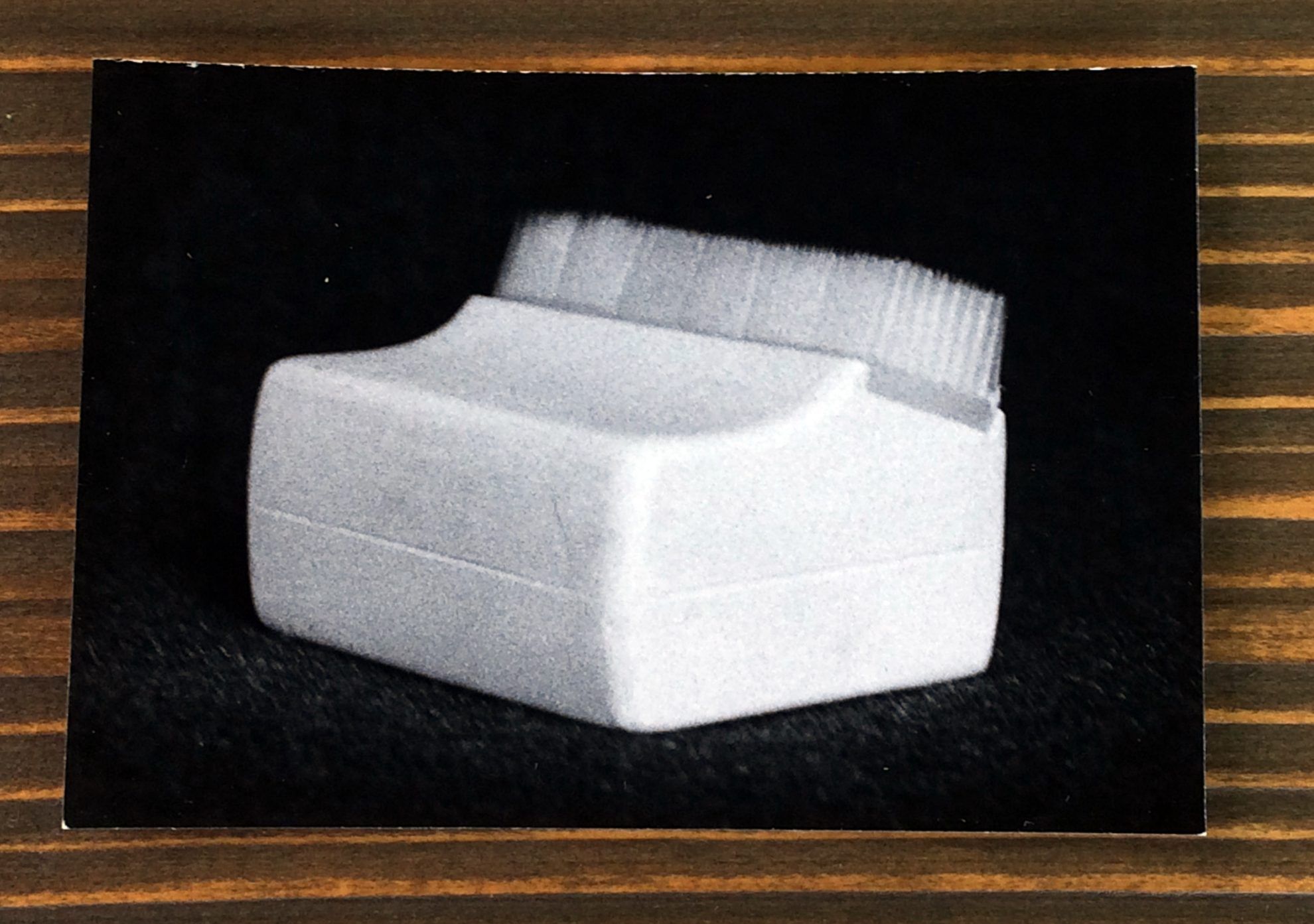
The large-scale manufacturing of plastic products, the manufacturing of the casting molds used for injection molding, the retooling of machines and the procurement of the various plastic pellets came with huge costs, and so the factories rarely switched to new forms, and they mainly did so if there was a certainty of returns and the financial investment promised a profit. The milk pourer was one of these exceptional tasks: Gyula Ernyey had to redesign the plastic container serving the purpose of storing the bagged milk already available on the market. In modern words, he received a typical redesign job.

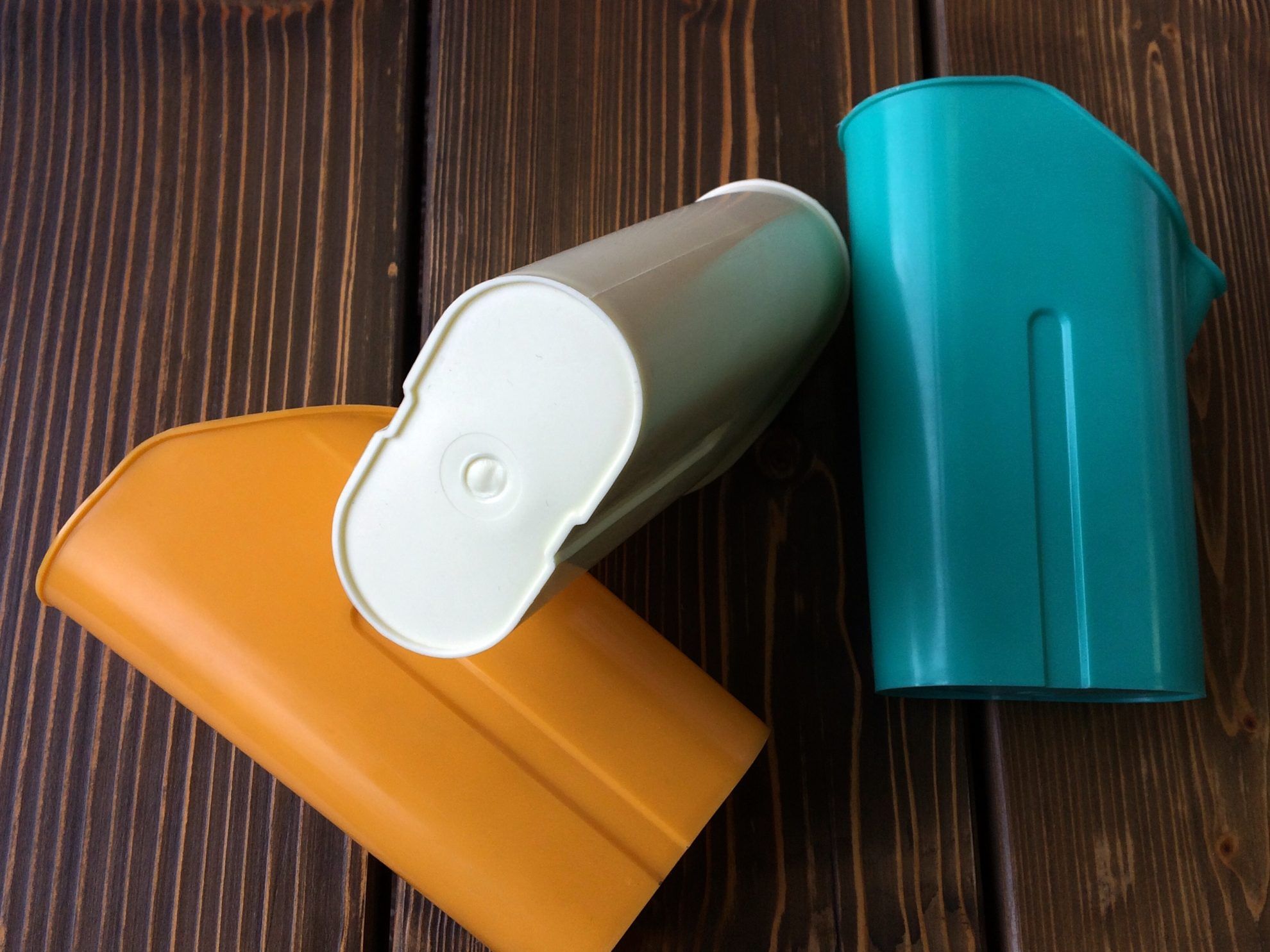
In Hungary, the most comprehensive presentation of artificial, synthetic materials was provided by the temporary exhibition and catalogue of the Museum of Ethnography in 2006 under the title Műanyag (Plastic), [5] featuring, of course, the milk pourer designed by the Ernyey-Gollob duo. Moreover, I would like to further recommend the thesis of my co-author, Kitti Mayer written on design theory MA in 2013 and the study she published based on the same under the title Mert ez műanyag! (Because this is plastic!)[6], and her own plastic milk pourer collection in the topic.
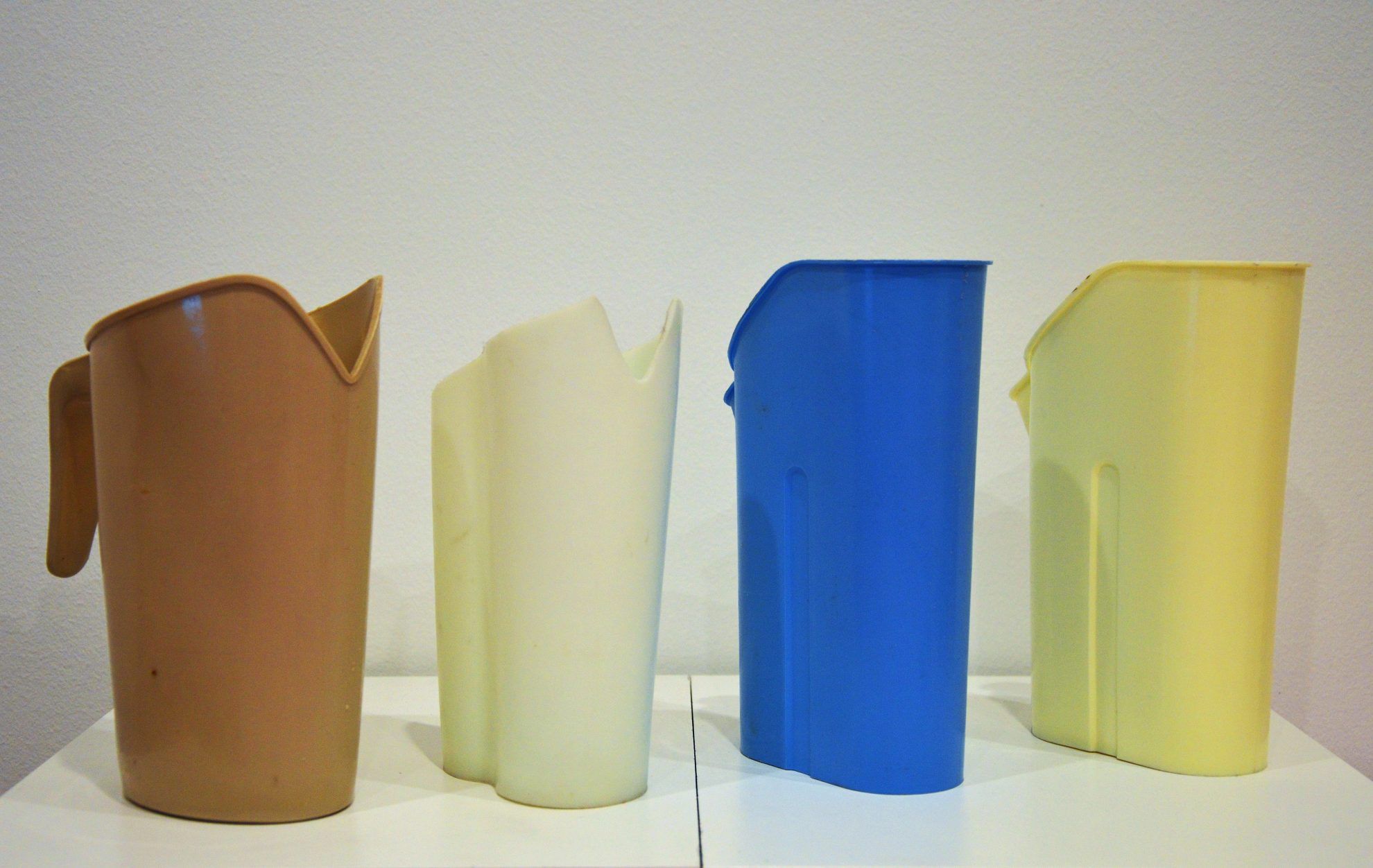
What we need to highlight of this giant and complex story in terms of the plastic milk pourer is that the chemical, packaging and dairy industry met in 1967, this is when they started to portion the pasteurized milk into polypack packaging, i.e. into polyethylene plastic bags, and they sealed the edge of the bags with welding. The introduction of milk poured into bags replacing the former bottle or jug version and other similar pre-packaged food products was a result of the expansion of the self-service stores appearing in the early 1960s.[7] At first, everyone was happy about bagged milk, as they thought that this way the transportation of milk will be simpler and more hygienic, and on top it was placed on the market for the same price. However, by the time the sale of bagged milk of sufficient amounts was resolved and spread in the whole country after 1970, there were no media outlets that had not been swamped by consumers’ complaints claiming that the bag tears, the milk drops, the milk fridge and later on the display refrigerators stink, the bag loses its shape once having been opened, and thus it is hard to store it properly. Thus, from long-awaited novelty, the bagged milk, which is perceived by some as a unique Hungarian trait, a so-called “Hungarikum” of Socialist Hungary, became “the nadir of food industry culture”[8]. The essential and at the same time ironic parody of its history was formulated by humorist Sándor Fábry in 2018, in his show titled Showder Klub.
The Hungarian Dairy Industry Trust presented the polypack-packed milk in December 1967 in Budapest. It was also stated at the “press conference” of the time that customers can purchase a plastic container to store the milk bag at home for 4 Forints, or in exchange for one-liter milk bottle. [9] Reportedly they knew it already that there would be problems with the product, and so the milk containers produced without a spout were placed on the market simultaneously to the milk with new packaging.[10] Gyula Ernyey and József Gollob’s design completed in 1968-69 brought serious innovations compared to the previous milk pourer. The most spectacular difference is that their object came with a spout – explaining the reasons why they called their design a milk pourer and not a milk container –, and with an ergonomic shape ensuring comfortable grip for the users. Moreover, the milk container could be pulled down from the injection molding casting mold with a single motion. The situation in Hungary at the time is vividly portrayed by the fact that the designs were only implemented between 1970 and 1972. According to Gyula Ernyey, the new product debuted at the Industrial Exhibition and Fair of Miskolc, but the object did not require particular marketing as every household was in need of a proper plastic milk pourer. Later on, a version outfitted with a handle was also placed on the market, but unfortunately we have no information as to the designer of this product, the same as in the case of the first piece of the milk pourer “evolution”.
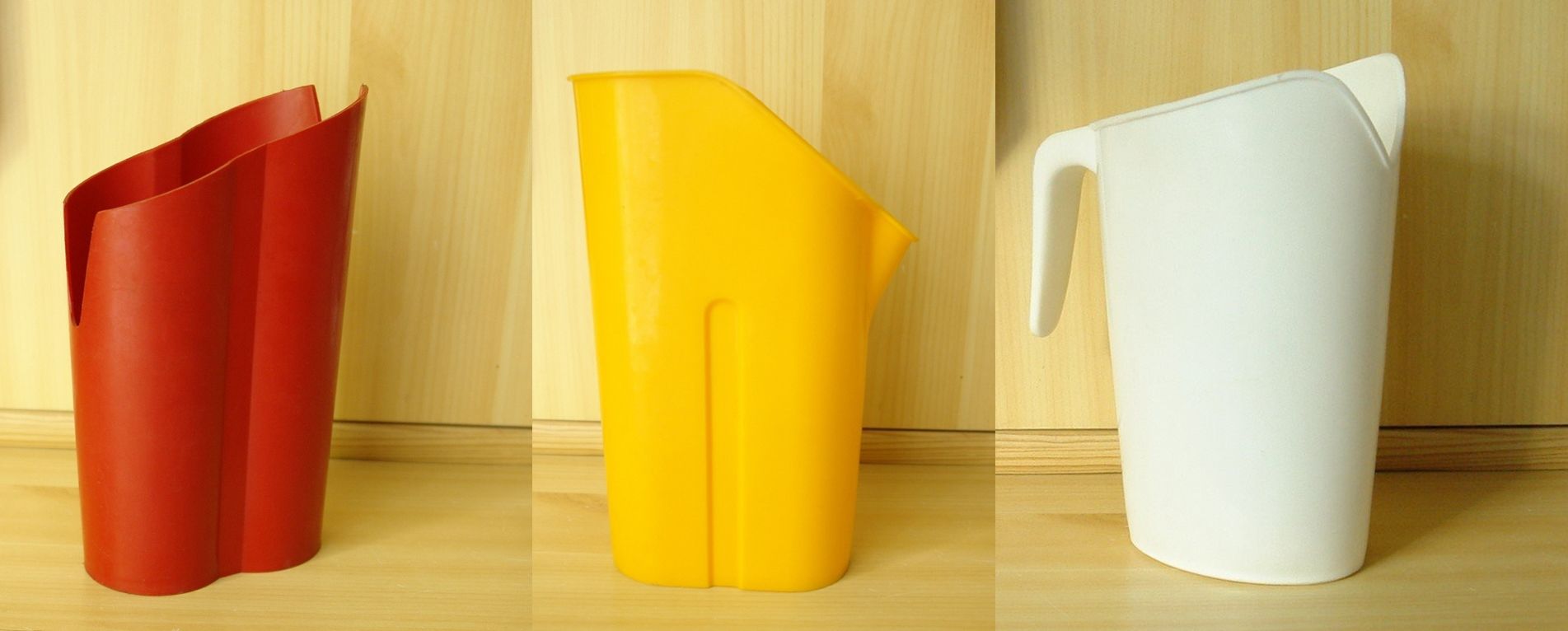
The typical warm yellow milk pourer in the collection of the Museum of Applied Arts was gifted by Gyula Ernyey to the institution, and the pourer was handed over by the Furniture Collection to the Contemporary Design Collection established in May 2015 through intra-collection transfer. It was taken into stock in 2017, and in June the same year, the object was showcased as part of a chamber exhibition organized in the framework of a 10-day coworking action.
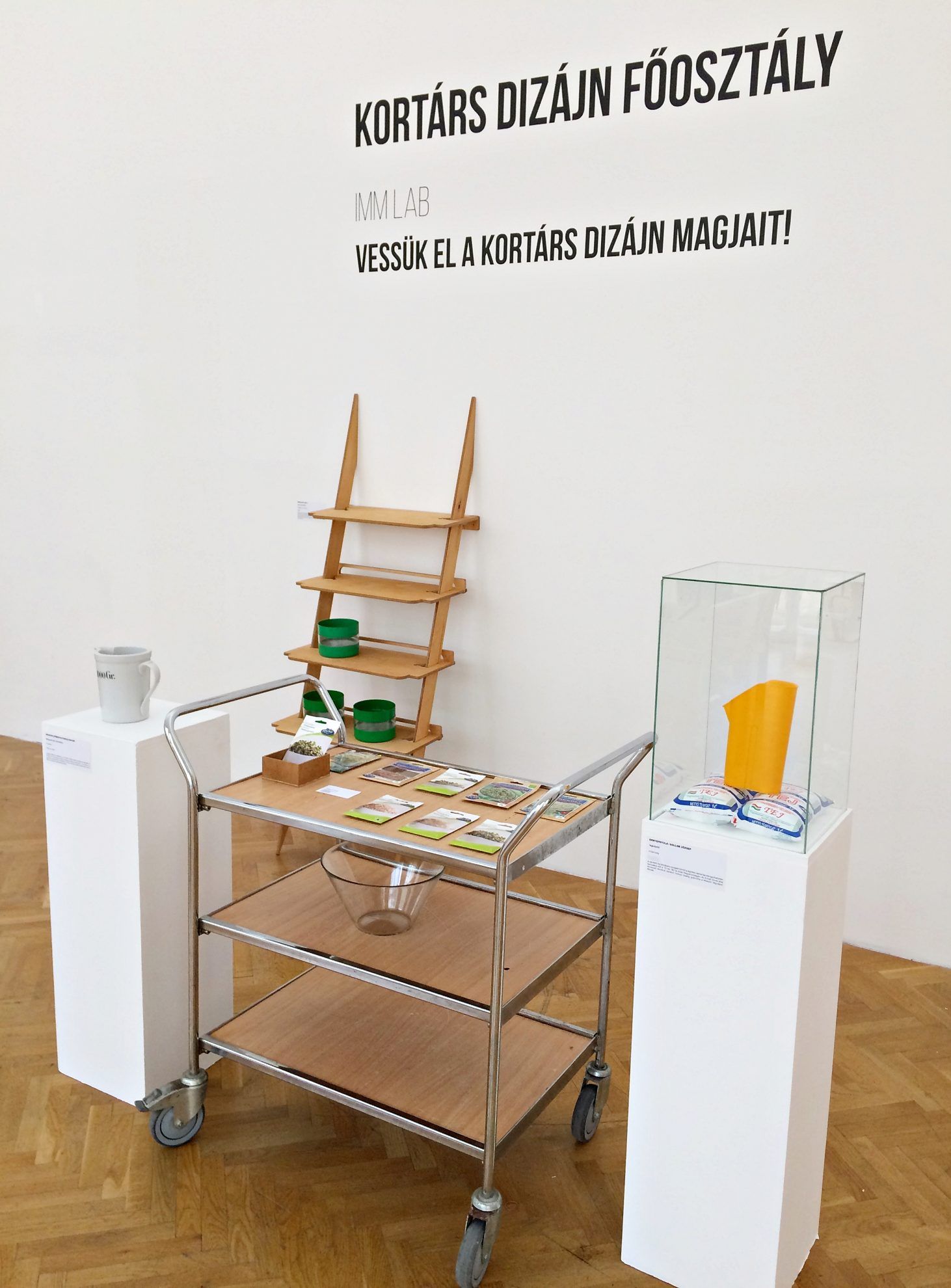
Plastic was regarded as a complex solution and as a key to modern life for long years, however, their adverse features surfaced quite soon. And today, the problem we are trying to tackle is how to replace and eliminate their use out of our lives. From the point of the Museum of Applied Arts, collecting, storing and conserving the plastic items brings a different, yet similarly urging task, as there are no specialized experts of this field in Hungarian museology, as their education is not ensured currently. The institution reopening after the large-scale reconstruction should also incorporate these factors into its collection and exhibition concept, as the design culture of the era is boldly represented by the objects made of plastic.[11]
Comments, references:
[1] DUTKA Mária: Mai iparművészetünk. (Applied Arts Today). In Tükör. 1966/2 (January 11, 1966), 7-9. [Color photo of Gyula Ernyey’s diploma project on page 8]
[2] ERNYEY Gyula: A ma művészete. Gondolatok az V. Országos Iparművészeti Kiállítás után. (Art Today. Thoughts After the 5th National Applied Arts Exhibition.) In Új Írás. 1966/2, 111-116.
[3] The legal predecessor of Miskolci Műanyagfeldolgozó Vállalat was established in 1915. In the beginning, the company produced vegetable oil industry products, and switched to the manufacturing of chemical industry products in 1940-42. Plastic processing started in 1959, in the city council corporation ironically called “tray king” due to the diverse and colorful household dishes, which was later on merged into the company Borsodi Vegyi Kombinát.
For more info about the history of the company, see:
(Ed. article): A Miskolci Műanyagfeldolgozó Vállalat. (The Miskolc Plastic Processing Corporation). In Figyelő. 1970/51 (December 23, 1970), 29.
[4] Kitti Mayer wrote about the work of József Gollob and the Safari thermos in the second part of the Object Fetish series.
[5] FEJŐS Zoltán – FRAZON Zsófia (Ed.): Műanyag. (Plastic.) Budapest Museum of Ethnography, 2007. [See the plastic milk pourer designed by the Ernyey-Gollob duo on page 135.]
[6] The study was originally published in hard copy:
MAYER Kitti: Mert ez műanyag! Időutazás az ötéves tervtől a PVC-fotelig. (Because This Is Plastic! Time Travel From the 5-year Plan to the PVC Armchair.) In Artmagazin. 2018/1 (Issue No. 102), 44-49.
[7] VALUCH Tibor: Csepel bicikli, Caesar konyak, Symphonia, Trapper farmer. A fogyasztás és a fogyasztói magatartás változásai a szocialista korszakban. (Csepel bicycle, Caesar cognac, Symphonia, Trapper Jeans. The Changes of Consumption and Consumer Behavior in the Socialist Era.) In Múltunk. 2008/3, (Issue No. 53), 40-59.
[8] The comment of Gábor Párniczky, a reader from Budapest for Éva Bedecs’s article A tej és testvérei (Milk and Its Siblings) (Magyarország. 1976/49 [December 5, 1976], 24-25.) In Magyarország. 1977/1 (January 2, 1977), 31.
[9] Kovács: Műanyag tasakban a tej. (Milk in plastic bags.) In Népszava. 1967/288 (December 6, 1967), 8.
[10] V. T.: Polipack. In Magyar Nemzet. 1967/291 (December 9, 1967), 5.
(Ed. article): Válasz polipack-ügyben. (Response in the Matter of Polipack.) In Magyar Nemzet. 1967/296 (December 15, 1967), 5.
[11] I would like to express my gratitude for the help provided for writing this article to: Gyula Ernyey, Hilda Horváth, Tímea Jákhalmi, Zsuzsanna Lovay, Kitti Mayer, Ágnes Prékopa, Zsolt Bakos and Balázs Semsey.
Cover photo 1: Gyula Ernyey – József Gollob: Milk pourer. Source: Museum of Applied Arts, Department of Contemporary Design Collection. Photograph: Urbán Jonatán Máté
In our Object Fetish article series, we introduce the emblematic pieces of Hungarian object culture. We go after objects and their designers: we ask questions, we investigate and we learn. A four-hand piece by design theorists Kitti Mayer and Piroska Novák, published every two months.
In partnership with:
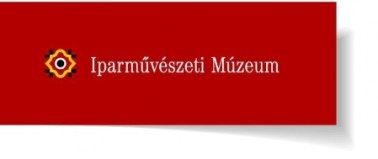

Hungarian. Fresh. Independent. | PólóNeked

Student housing in the Caribbean | Project Grenada
